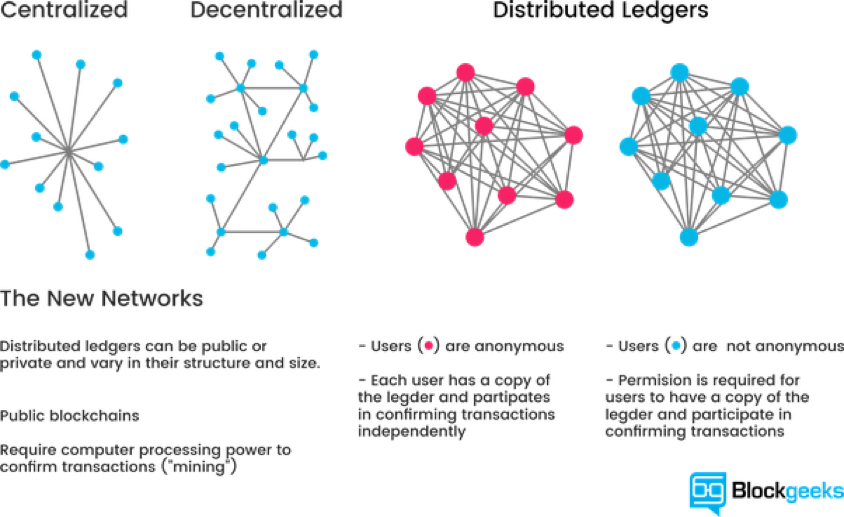“The leader’s job is not to know the future, but to design the platform that will discover it.”
BIll Barnett, Stanford University GSB
Pitch:
Create and nurture an ADF Blockchain Community (ABC) within the services to exploit the transformational potential of blockchain with scope and intent to network with civilian and coalition peers in a strictly unclassified environment.
Blockchain:
A blockchain is a database for storing digital records. But unlike centralised databases we are more familiar with, blockchain databases are distributed and shared. All blockchain network participants can submit new records, but the records are only added once network participant consensus agreement is achieved. This characteristic of blockchain databases makes them inherently secure through the use of a form of cryptography called secure hash algorithms. An added advantage is that resiliency to compromise increases as the blockchain database network grows. Many would be familiar with hearing the term Bitcoin, which is the first decentralised currency, or cryptocurrency, based on blockchain technology. Bitcoin was the first successful widescale implementation of blockchain. But the potential of blockchain extends far beyond just speculative cryptocurrencies and has considerable military applications. In short, it allows users to exchange information reliably over an unreliable network that is assumed to be compromised using the aggregate network to defend its integrity.

Purpose:
To sequentially develop a network, platform, and pipeline for defence blockchain technology exploitation organic to defence.
Potential ADF blockchain opportunities are considerable, but just a few include: asset lifecycle management, physical asset keys, communications, inventory management, personnel course/health/identification/performance records management, provenance, and security.
Blockchain is accessible, distributed, flexible, private, resilient, secure, and potentially as transformational as the internet, thus worthy of investigating its potential for near future exploitation by both emerging threat actors as well as by defence.

Pain point:
ADF and coalition partners possess the human capacity, but lack the organic human technical capability, to exploit the potential of blockchain. Reconnaissance on operations is an organic capability to the force. An argument can be made that emerging technology reconnaissance capacity should also be organic to the force, even if only starting as an analog to defence sports teams and interest-based clubs.
Problem Appreciation:
The ADF, 5 Eyes, and coalition partners have historically placed great value in, and recognition of, physical achievement in defence sponsored sport in order to align with organisational requirements for physical capability combined with teamwork and leadership.
I believe we should enhance recognition and support of cognitive achievement due to the increasing technological demands placed on defence.
In a Moore’s Law world of relentless technological advancement we cannot rely on the fallacy of next-generation “digital natives” alone to mitigate the growing demand for technological exploitation capability organic to the force unless we encourage, support and recognize cognitive achievement similarly to how we have long recognised other achievements such as in sport.
We need to shape the existing cultural paradigm towards a more balanced multi-domain and multi-sport mindset that incorporates cognitive performance recognition alongside physical sports recognition.
Proposed Course of Action:
Phase 1: Build the Network:
Build and develop an ABC consisting of regular force, reserve force, and civilian personnel interested in learning and exploring blockchain technology for both personal skills growth and benefit to defence.
The connective tissue linking the nascent network would be the use of cloud based tools such as Slack to connect all those interested in learning about blockchain, the recruitment of local “blockchain ambassadors” as human hubs to help spark and facilitate in-person networking, and the support and recognition from command.
All based on five key “Y’s”: Community, Diversity, Fluidity, Serendipity, and Security
Phase 2: Build the Platform:
Once the ABC network has grown into a sustainable community, develop a dynamic platform to create value facilitating exchange between and amongst ABC, civilian blockchain community, commercial blockchain industry, defence, and coalition peers.
Phase 3: Build the Pipeline:
Once a dynamic platform has been established, concurrent activity will have to be conducted to move beyond blockchain capacity development. Blockchain capability development, value creation, and value capture can be achieved within a distinct blockchain innovation pipeline, or via a blockchain innovation coupling connecting into a larger organisational innovation pipeline to continue the plumbing metaphor.
Phase 4: Blockchain technology exploitation and implementation:
Once a blockchain innovation pipeline or blockchain innovation coupling attached to a larger defence innovation pipeline has been established, then concurrent activity shifts towards exploiting the blockchain community value created by it. The value is captured through implementation to enhance defence capability as well as coalition collaboration and interoperability. This model can be applied to any tech innovation, not just blockchain.
Conclusion:
Technological change accelerating towards the exponential curve compels us to improve our capacity, capability, and culture to explore and exploit every potential advantage we can find in existing and emerging technology to provide us a sustainable unfair advantage.
Author:
Chris Elles is a member of the New Zealand Army (Reserve). He is currently serving as a Company Weapons Sergeant in 2/4 RNZIR and as a member of the Aumangea Assessment Program Training Team. He is an entrepreneur and an alumnus of Stanford’s Graduate School of Business. Before emigrating to NZ, Chris was an early stage employee of Amazon.com

